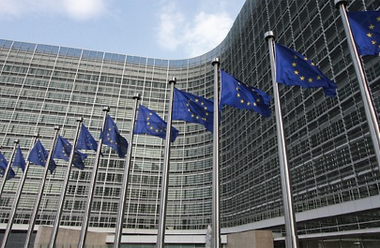Even if high-carbon emitting companies take climate action as early as 2026, the financial sector will face at least $2.2trn in losses, a new study has estimated.
“Our research highlights that we have already reached a point where an orderly transition might not even be possible anymore,” said Moritz Baer, project manager of the Climate Stress Testing and Scenarios Project (CSTS), a collaboration between the Oxford Sustainable Finance Group at the University of Oxford and the non-profit think tank 2° Investing Initiative.
Titled ‘The Cost for the Financial Sector if Firms Delay Climate Action’, the initiative’s launch study also found a non-linear relationship between delaying the transition and expected losses. This was estimated to lead to additional costs of $150bn for the financial sector for every year climate action by companies is postponed further.
The report authors modelled the impact of the climate-related transition on equity valuation and probabilities of default of publicly listed companies in four sectors globally: power generation, oil and gas, coal production and the automotive industry.
The bottom-up stress testing framework they developed uses asset-level data based on forward-looking production plans of companies and sourced from French data company Asset Resolution. The authors said this differed to central banks’ and supervisors’ practices that often used historical and projected carbon emissions.
CSTS argued that two firms with exactly the same carbon emissions today could face widely different transition risks depending on whether they build out sustainable or high-carbon technologies.
Baer said: “As our model is based on the physical infrastructure [i.e. production facilities] and asset level of firms, it can better capture if firms are actually shifting their production towards sustainable technologies or whether they are building out e.g. oil extraction.
“In that sense, such an asset-level based stress test can be more granular than standard macroeconomic models and stress tests that only look at whole sectors.”
The stress test covered a total of 598 companies and estimated the impact of the transition on leading and lagging firms.
“While climate laggards that are misaligned with the transition face equity value changes of up to 84%, some firms that have been leading the transition to net zero see net benefits to their profitability and creditworthiness,” the report authors wrote.
“These positive effects are most prominent in the power sector, where individual firms see their equity values increase by up to 44% and reductions in their probability of defaults of six percentage points.”
Ben Caldecott, director of the Oxford Sustainable Finance Group, said the report “demonstrates that policymakers, central banks and supervisors need to move quickly to accelerate climate action from polluting companies”.
Advice for investors
Asked for comment, Steven Sowden, principal and investment consultant at Mercer, said that to minimise transition risks, investors should consider climate strategies for whole portfolios and develop milestones using net-zero plans.
“Investors should review their beliefs around climate risks including the extent to which transition costs and risks are ‘priced in’,” he said. “Engagement should be used to improve companies’ policies where necessary and consideration should be given to varying portfolio weights according to the quality of future planning and outlook of different holdings.”
Nick Stansbury, head of climate solutions at Legal & General Investment Management, warned of the dangers of a disorderly scenario.
“In a disorderly scenario, these [material] risks are broad based and are difficult for investors to hide from,” he said. ”It is very difficult for investors to take actions to reduce the risks resulting from a very disorderly transition – which should lead investors to consider not just the risks they are exposed to, but the risk that they are causing to the climate.”
Moody’s Investor Service has said that new announcements made at COP26 have increased the likelihood of a more rapid energy transition scenario becoming a reality,
The CSTS report can be found here.








No comments yet